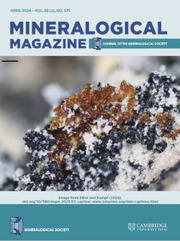Article contents
Bioreduction of iodate in sediment microcosms
Published online by Cambridge University Press: 02 January 2018
Abstract
Iodine-129 is a high-yield fission product formed in nuclear reactors and is a risk-driving radionuclide in both contaminated land and radioactive waste disposal due to its high mobility and long half-life. Here, the bioreduction behaviour of iodate was investigated by tracking iodine speciation and concentration in solution during the development of progressive anoxia in sediment microcosm experiments incubated at neutral pH. Experiments with acetate added as an electron donor showed the expected cascade of terminal electron-accepting processes. Analysis of solution chemistry showed reduction of iodate to iodide during the early stages of metal (Mn(IV) and Fe(III)) reduction, but with no significant retention of iodine species on solids. There was, however, a net release of natural iodine associated with the sediments to solution when robust iron reduction / sulfate reduction had developed. In addition, over 210 days, the controls with no electron donor and the sterile controls showed no Mn(IV) or Fe(III) reduction but displayed modest sorption of iodate to the sediments in the absence of bioreduction. Overall these results show that under oxic conditions iodate may be partially sorbed to sediments over extended periods but that development of mildly reducing conditions leads to the reductive release of iodine to solution as iodide.
- Type
- Research Article
- Information
- Creative Commons
- Copyright © The Mineralogical Society of Great Britain and Ireland 2015. This is an open access article, distributed under the terms of the Creative Commons Attribution (CC BY) license (http://creativecommons.org/licenses/by/4.0/), which permits unrestricted use, distribution, and reproduction in any medium, provided the original work is properly cited.
- Copyright
- Copyright © The Mineralogical Society of Great Britain and Ireland 2015
References
- 11
- Cited by




